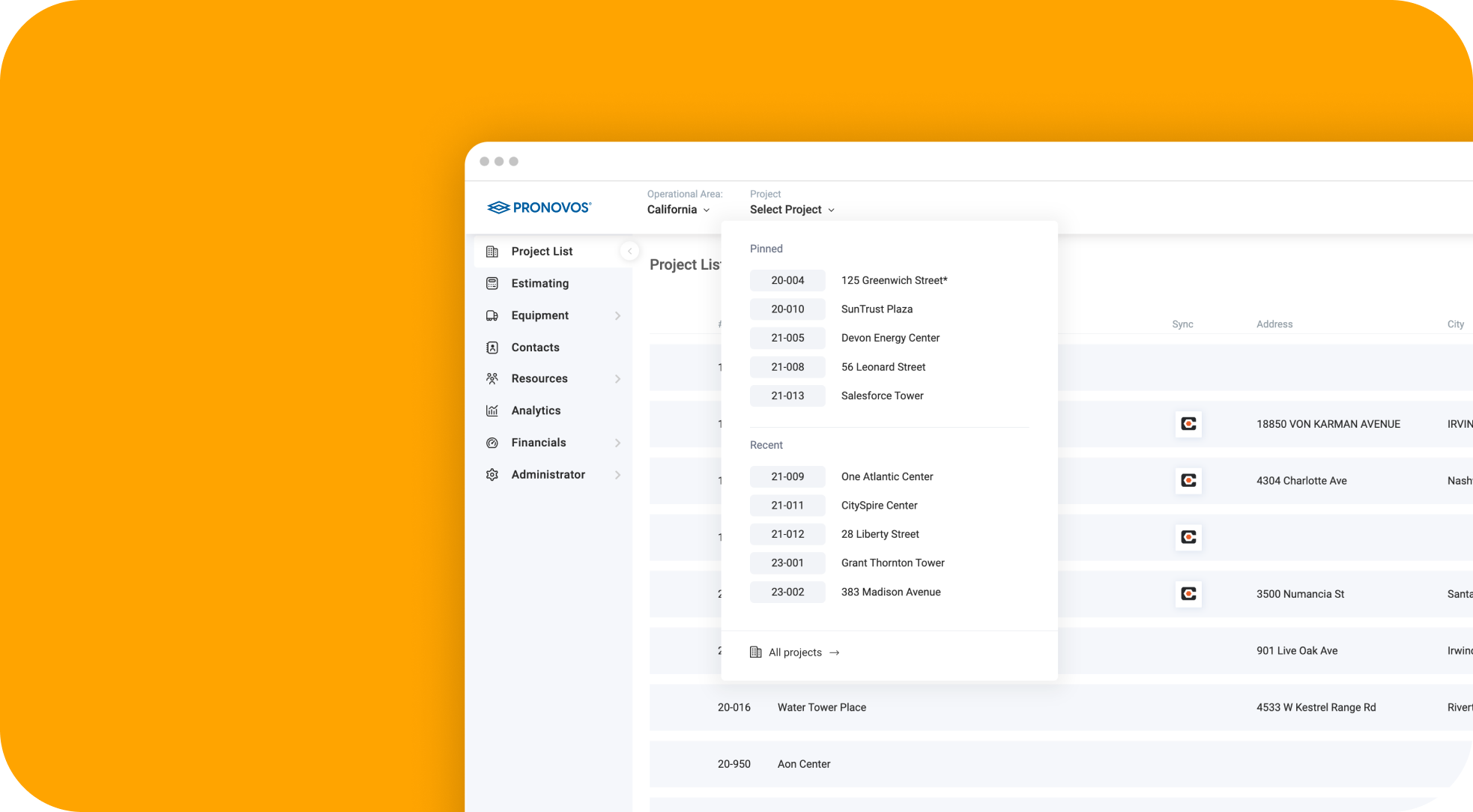Any construction veteran expects the economy to contract and expand. However, the global pandemic presents contractors with a challenge unlike any in recent memory.
Published April 3, 2020 . 0 min read
The Unthinkable Has Happened. How Should Contractors Respond?
Business
The Unthinkable Has Happened. How Should Contractors Respond?

How should they respond in an environment of such uncertainty? For some perspective, I chatted with Dr. John Killingsworth, a construction management professor at Colorado State University who has conducted extensive research on how contractors can weather economic downturns.
BRUCE ORR: John, let’s say you’re in IT or are a c-suite executive at a contracting firm. This event has occurred. What are some of the questions you should be asking right now?
JOHN KILLINGSWORTH: For starters, we have to acknowledge that the uncertainties are so tremendous that many contractors have no choice but to be reactive in the short term. They’re literally not sure whether particular job sites will be open or closed tomorrow or whether they’ll go to work next week. They’re also looking at predictions—from highly qualified statisticians, public health officials and others—that are just all over the map due to the limited nature of the data we have at hand.
Nonetheless, as this crisis continues it will be increasingly important for contractors to dive into their long-term strategies. In particular, they need to scrutinize the fixed costs associated with everything from personnel to PPE (property, plant and equipment). Hard choices may be required. For example, it’s natural to want to hold onto your best people in the face of a downturn. We all know how difficult and expensive it is to replace key personnel later when the economy recovers.
However, you need to quantify how much your margin—and, in turn, your liquidity—will suffer if you maintain fixed costs at a time when revenues are declining. Now is the time to take advantage of analytic tools to consider the correlations and trends with all of these variables. It’s valuable to play out scenarios such as: ‘What happens if these projects in our backlog fail to materialize in the short term?’ or ‘Here’s how our margins and liquidity could be affected if we retain 100, 90 or 80 percent of our overhead personnel.’
BRUCE ORR: You want to keep as many of those proven project managers, estimators, marketers and accountants as you can without hitting that point where you’re not meeting your breakeven volume, right? You’ve got to protect your profits and cash reserves.
JOHN KILLINGSWORTH: Exactly. Some of these decisions related to variable costs are fairly straightforward: ‘We may have to hire fewer interns this summer.’ So, your work-in-progress and your backlog come into play significantly, and the complexities there can be significant.
Because it’s easier to improve liquidity by making adjustments to personnel than other fixed assets, many companies take the easy path to solving the immediate problem. You need to think through what will happen if projects are canceled. How will you adjust your fixed costs? Will you work to maintain your best employees regardless of the impact on profits?
What are the long-term adjustments that you’ll make if the recession is lengthy? Let’s say you’ve recently acquired and allocated a significant amount of equipment for projects that, unfortunately, end up being canceled outright or put on indefinite hold. Suddenly, these fixed assets are no longer associated with project revenue. So instead of being able to associate that expense as a direct cost to a job, they’re now part of your overhead.
BRUCE ORR: I suppose a lot of it will depend on how that backlog looks. If you’re already in preconstruction on a good portion of projects, you may feel OK about maintaining more of your fixed costs?
JOHN KILLINGSWORTH: Correct. But if your backlog to your revenue is weaker, you should be more conservative in terms of how you step up—if at all—your fixed costs. Clearly, contractors need to be paying close attention to what’s happening with the global economy and, of course, the trajectory of the virus. Depending on what happens, that backlog could disappear pretty quickly as project funding, both commercial and governmental, dries up.
BRUCE ORR: Are there some other things that contractors should be keeping in mind?
JOHN KILLINGSWORTH: It’s important to remember that you can still be profitable at a lower revenue rate. The key is to get ahead of the situation. It’s not uncommon for contractors to say to themselves, essentially, ‘All we need to do is break even and get through this; we’re not making any cuts.’ Unfortunately, though, when your revenues are declining, you cannot maintain those fixed costs without significant impacts on your available cash. And if your liquidity nosedives, then when you come out of the recession you will be unable to bond projects in the same way as you could prior to the recession. Your cash position has been compromised, and therefore your bonding capacity is diminished.
BRUCE ORR: In that case, you’d have high capacity in terms of personnel but insufficient liquidity to put those resources to good use.
JOHN KILLINGSWORTH: Right. That’s why you need to run those analytics. Try to understand the relationship between maintaining those fixed costs and the impact on profitability. A good manager feels very deeply personal about their employees and recognizes that there is a balance between maintaining profits and reducing personnel costs. So use analytics to inform that decision, to know what the true costs are. Regardless of how you function, you have to strive for some level of profitability. All it takes is about a year without typical profit margins for a good, strong company to substantially weaken. So have a well-informed strategy for entering the recession and, more importantly, coming out of the recession.
BRUCE ORR: Any other tips or recommendations?
JOHN KILLINGSWORTH: A final point I would make is that your emphasis as a contractor really matters during economic downturns and should figure prominently in your strategy. For example, companies that are already established in diverse markets often can weather the storm better. That’s because they’re able to shift resources to those sectors in which they have competency that are still in demand. Likewise, certain highly specialized contractors may perform better due to continued demand for their services.
For example, in the United States, it is clear that healthcare must change. Every hospital administrator here is now thinking about how to increase capacity and be better prepared for the next catastrophe. That means making physical changes—construction projects—that can translate into work for specialized contractors in healthcare and medicine.
Economic downturns typically fuel demand for multifamily housing, an already robust trend due to the Millennial and Gen Z preference for urban lifestyles. Likewise, online delivery of groceries and other material goods is in overdrive right now. There is widespread speculation that, after this event, consumer behavior will be permanently changed. As a result, I could certainly see continued, rapid expansion of industrial warehouses and distribution centers, as well as data centers, globally.
I have confidence that diverse and specialized contractors alike will pursue such opportunities, which are necessary for safer and more secure communities and societies.
This column originally appeared on AEC-Business.com, which focuses on construction innovation and technology and has a global audience of professionals who are interested in subjects such as digitalization of the industry, lean construction, materials technology, industrialization, sustainability and business improvement. Thanks to Aarni Heiskanen, a Top 100 Influencer in construction, for inviting us to contribute to AEC’s excellent website.
ADDITIONAL RESOURCES:
Combining Foundation with ProNovos allows contractors to flow their existing cost and budget data into a powerful analytics engine, yielding new perspectives on trends and leading indicators
Construction resource management capabilities of ProNovos’ Operations Manager construction software
Press release on the launch of Operations Manager–a good primer on the benefits of construction resource management and construction software platforms



